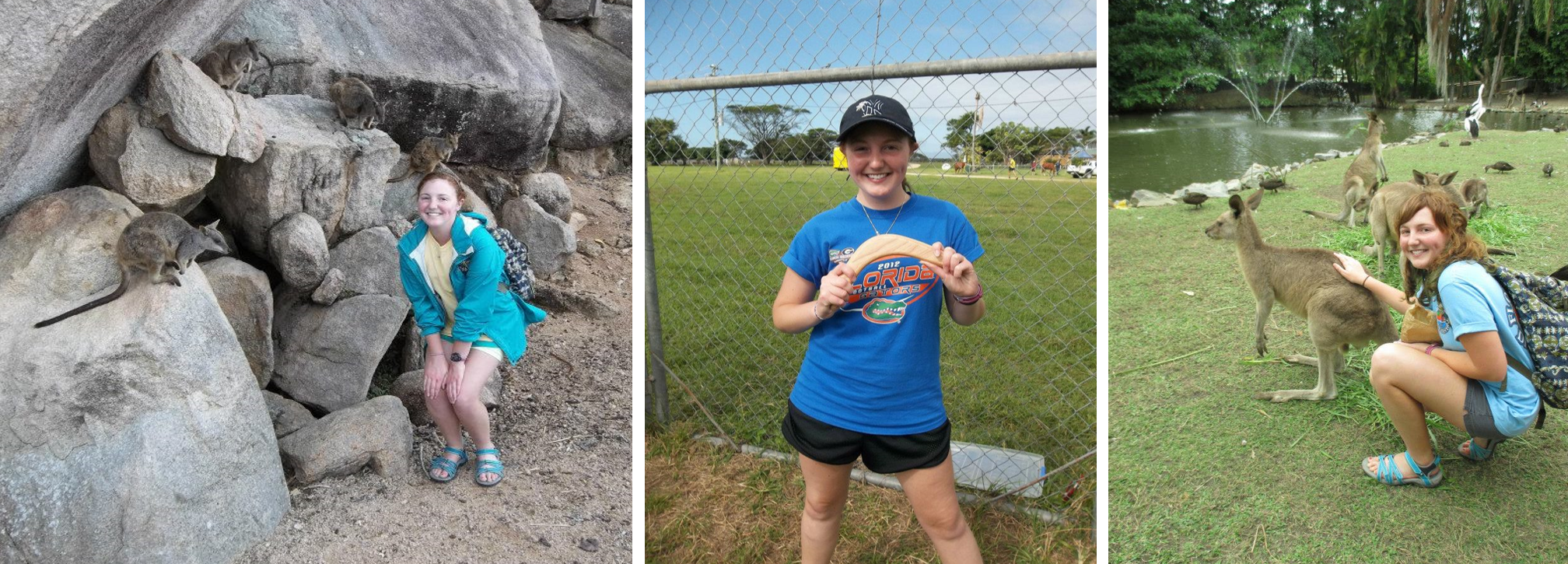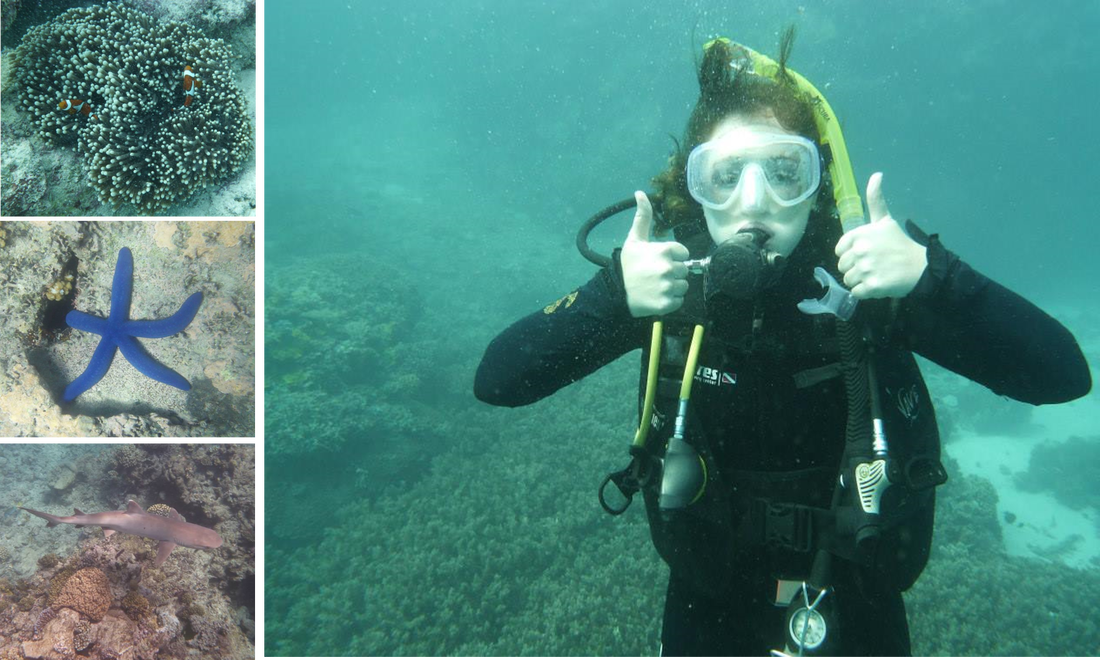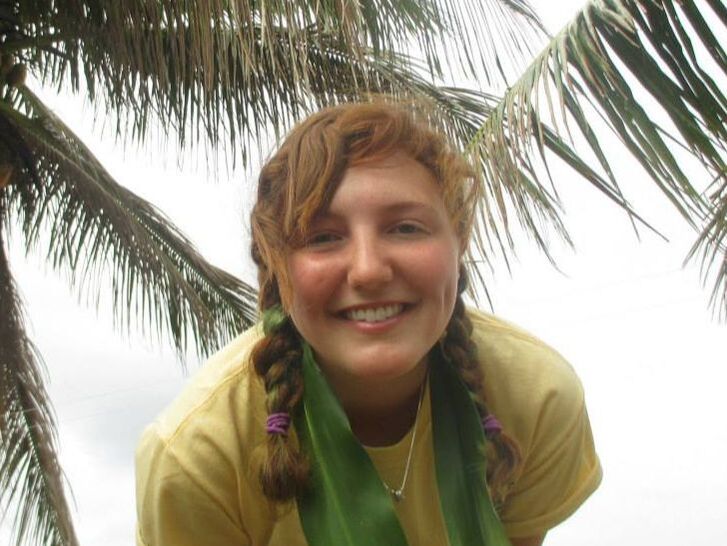Kayla GoforthPh. D UNC - Department of Biology The spring of my senior year of high school, my head was in a constant state of analyzing as I tried to pick a college to attend the following fall. On any given day, the thoughts circling through my head looked something like this: One point for University of Georgia for marine biology focused study abroad programs, one point for University of Florida for the Archie Carr Sea Turtle Research Center, one point for University of Virginia for a nearby marine science lab… I had applied to twelve colleges for my undergraduate degree - TWELVE - and had extensive spreadsheets charting the pros and cons of each school. I was one hundred percent decided on what my field of study in college would be - marine biology - however, I was completely undecided on which school would be the best to pursue this degree at. But throughout all of my tallying, analyzing and charting, one school continued to stand out above all others: The University of Florida (UF for short), home of the Florida Gators. My first two years at UF were filled with a plethora of marine biology experiences. My very first semester I was fortunate enough to take part in a manatee health survey with the marine biology club and researchers from USGS and the veterinary school. These health assessments happen each year, and are important for checking the status of the manatee population, since manatees are an endangered species. This adventure was followed by a SCUBA certification class. As part of the SCUBA class, we took a trip to the Florida Keys for our official certification dives. I had been snorkeling on coral reefs before, but there is nothing that compares to diving – it’s like visiting a different world. The summer after my second year I flew halfway across the world to study abroad in Australia and Fiji. I had been eager to visit Australia since I was a small child because I was, and still am, amazed by the Great Barrier Reef. The Great Barrier Reef spans over 2300 km, 1400 miles, and is composed of nearly 3000 individual reefs and hundreds of islands, and is classified as one of the seven wonders of the natural world. Tragically, the Great Barrier Reef shrinks every year, due primarily to rapid, human-induced, climate change – warming oceans cause the corals to die off. Corals live in symbiosis, or in coordination with, a special type of algae that helps provide food for the corals and this algae is also what gives corals their brilliant colors. When the ocean is too warm, the corals become stressed and eject their symbiotic algae; this is known as ‘bleaching’. Bleaching both causes the corals to starve, because the algae no longer provide the corals food, and to turn, well, bleach white. Given this, I was naturally quite eager to see the Great Barrier Reef before more of it dies off.  A large part of the study abroad program (American Universities International Program) I was enrolled in involved studies focused on the Great Barrier Reef. We spent three full days out on a dive & snorkel charter boat studying and learning about the Great Barrier Reef ecosystem. Out on the Great Barrier Reef, all you could see from the boat deck was reef; there was reef extending all the way out to the horizon. We performed a fish population survey on several subsets of the reef system, snorkeling along a transect line, which is a pre-marked path laid out on the ocean floor, that a snorkeler can follow along as they swim. We identified all the species of fishes and corals we saw; I counted butterfly fish, parrot fish, and even a moray eel! The data we collected was part of a long-term reef monitoring study, tracking how the animals inhabiting the reef change over time. Those of us who were SCUBA certified also got to go diving along the reef. On one of the reefs the boat captain took us in a small dingy further out into the reef and we scuba-dove all the way back to the charter boat. Along the dive, we saw HUGE sea cucumbers and sea stars, and even a few blacktip sharks. We also saw a vibrant red, young lion fish – on the Great Barrier Reef lion fish are a rare species, unlike in the Florida Keys where they are invasive and abundant.  As part of the program, we also went to an aquarium where I saw an Australian flatback sea turtle that was in rehabilitation. Flatback sea turtles are only found in Australian waters, which means they can only be seen when visiting Australia. But not only did I see plenty of marine animals, I saw some unique terrestrial, or land, animals as well. On Magnetic Island, I saw koalas hiding in the eucalyptus trees, and a troupe of wallabies that would eat apple slices out of your hands. Out along the edges of the Outback, there were kangaroos, and the most incredible display of stars in the night sky. After six weeks in Australia, the entire study abroad program boarded a plane to head to Fiji for ten days (by the way, on the Fiji flight, we got ice cream bars!). In Fiji we stayed in a local village with families, and learned how the village was adjusting and carefully monitoring the fish species they took for food so as not to overfish any one species. Overfishing is when a fish population is fished so frequently that it is depleted – this then prevents that fish from serving as a food resource in future years. A large part of the study abroad program consisted of developing opinions and ideas about different environmental and conservation issues and then debating the best practices for conservation. One of the big debates we had was centered around the critical issue of overfishing. Most large-scale fishing industries, such as those in the U.S., overfish important fish populations. By learning how the Fijians viewed their resources and how they monitored fish populations we discussed and debated new ideas for how to preserve fish populations and prevent overfishing in the future. Overall, one of the best ways we can help prevent overfishing is to eat sustainably sourced fish. This adventure would be the first of many focused on marine biology and conservation. It gave me an even greater appreciation for the ocean that I already loved, and more tools for how to promote marine conservation. I knew at the end of my trip that I was absolutely on the right career path, and I was excited and anxious to start doing more marine-related research. The following summer I would begin to conduct my own undergraduate research project focused on, unsurprisingly, sea turtle nesting.
0 Comments
Leave a Reply. |
Kayla GoforthPh. D UNC Archives
June 2021
Categories:
|




